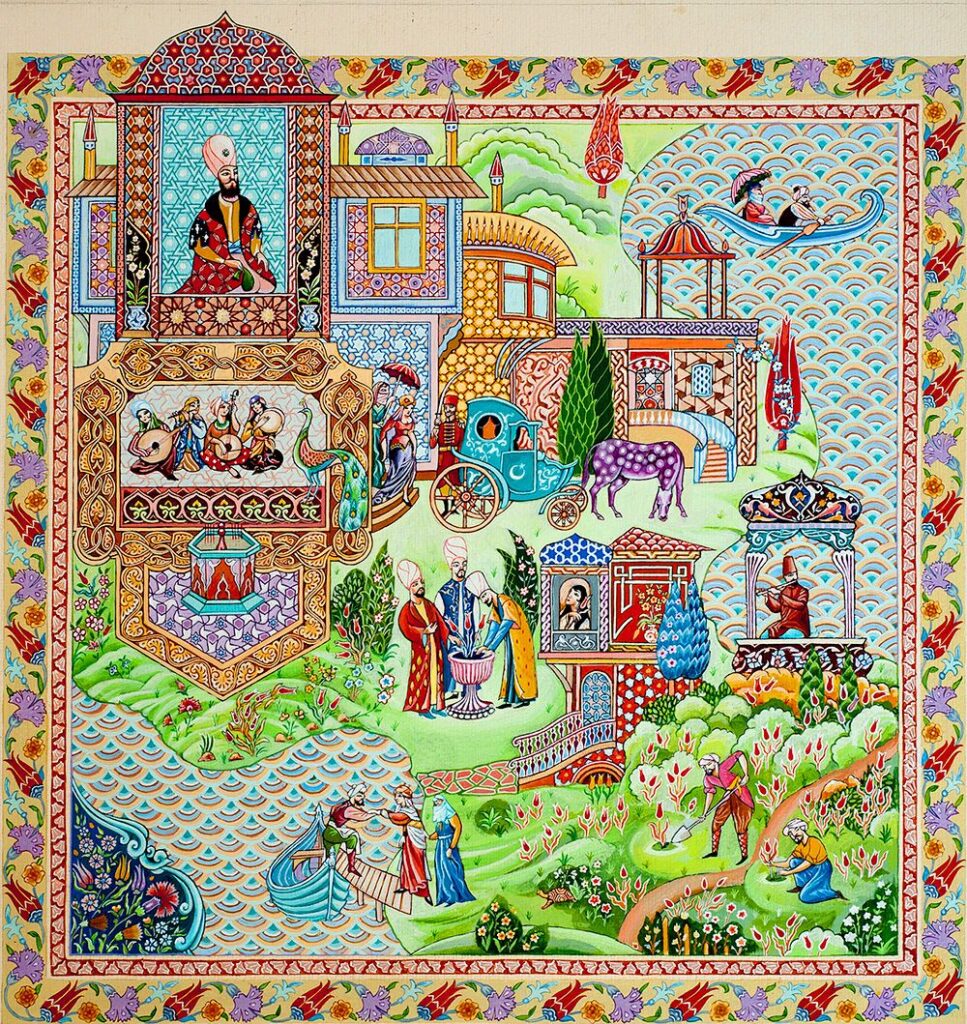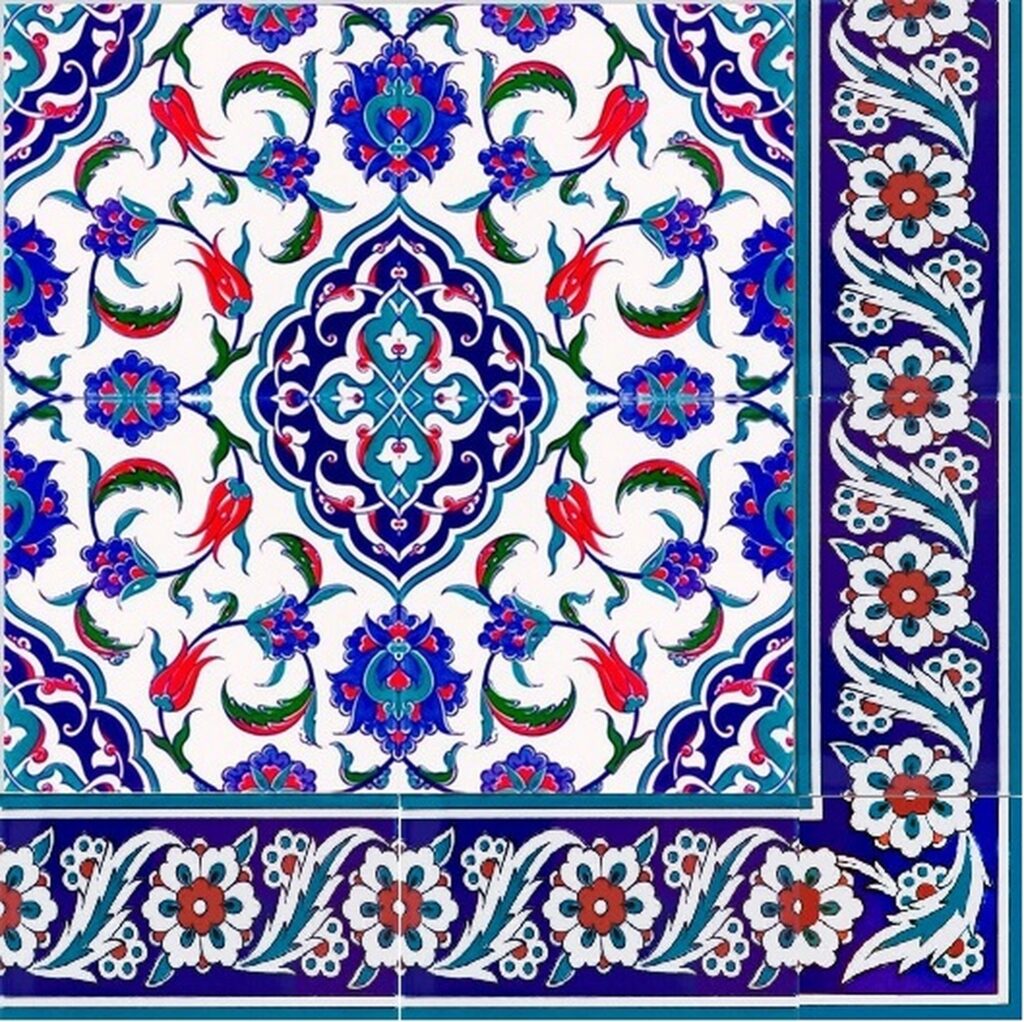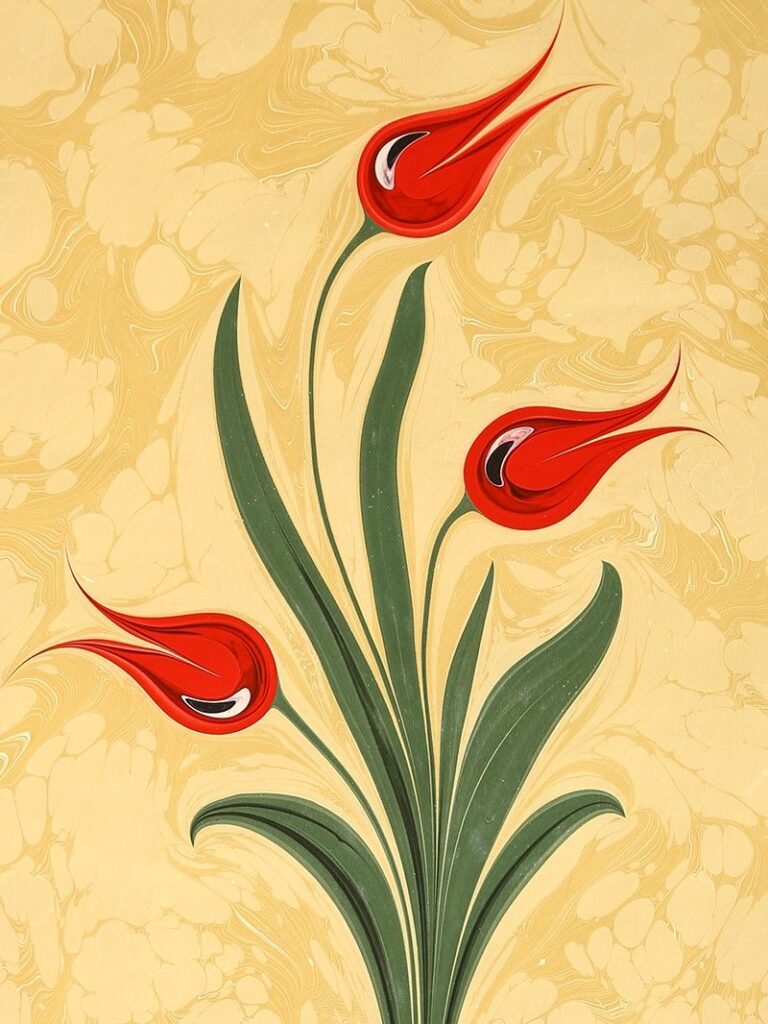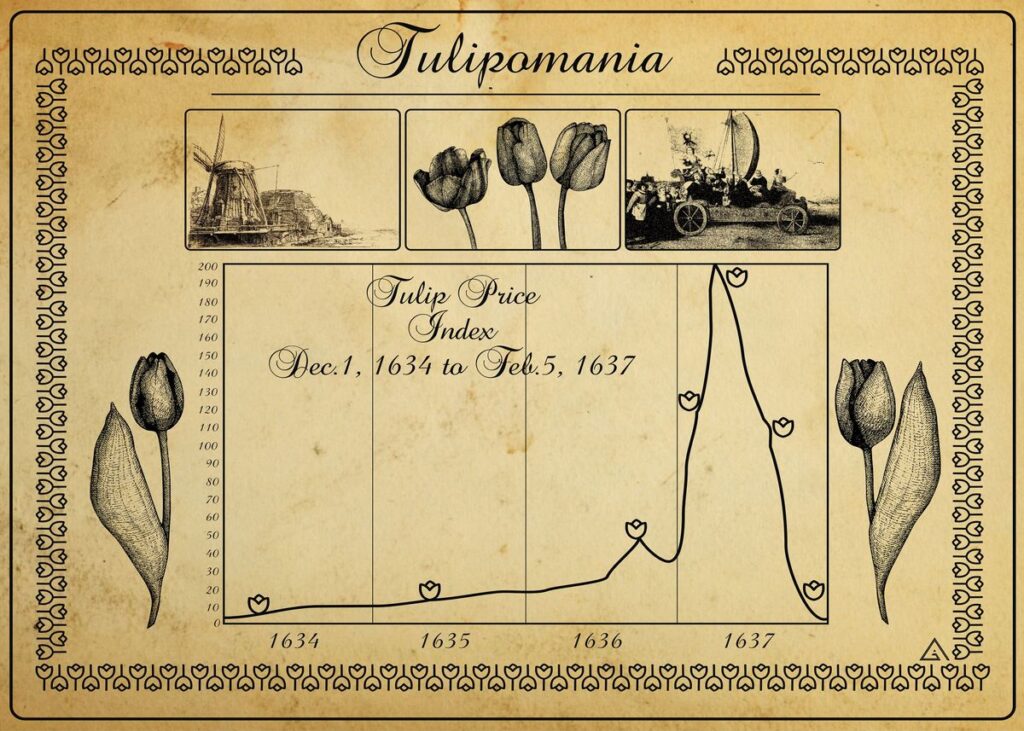Istanbul Tulip Festival
Video Introduction
Istanbul Tulip Festival is held each April and the city parks, squares, and gardens are amass with millions of tulips of every color. The city government of Istanbul plants every year millions of tulips in Istanbul’s parks, avenues (throughout Istanbul, most of which adorn Gülhane, Göztepe and Zeytinburnu Parks, Emirgan, Yıldız, Beykoz, Fethi Paşa, Çamlıca, Gözdağı-Pendik and Hidiv-Çubuklu Groves, and Sultanahmet Square.), traffic roundabouts and…really anywhere there is open ground to celebrate the Spring between 01 and 30 April. In recent years, the total number planted has been reached to 30 million, including over a half-million planted as a huge “flower carpet” (the world’s largest colorful tulip carpet ) in Sultanahmet’s Hippodrome (At Meydanı) in front of the Sultanahmet (Blue) Mosque. The result is a tradition of a splendid spring flower festival with bright splashes of color everywhere.The festival includes several activities such as music concerts, sports games and exhibitions.
History of Tulip in Turkey
Tulip is a legendary ornamental flower of Turkey that has been a part of the oldest natural tradition for centuries. It grows in groups in fields on the mountains of Middle East and Near East. We know it for this reason. From the 12th century onwards, it has been stylized, and entered in our ornaments. In the period of Anatolian Seljuk Empire and feudal principalities, this was a subject of major importance enough to be discussed individually. In the 13th century, Mevlâna was the first poet to say verses for tulips in Anatolia.
Mevlana thought of “the secret black color in garden tulips, which appeared as a red joy from outside” and considered “the blooming as the most grievous of smiles.” Because by then, the tulip is no longer fresh and is about to fade. At the onset of the Ottoman Empire in the 14th and 15th centuries, which was a feudal principality at first, there was a secret, silent fondness that did not make it to history.Sultan Mehmet the Conqueror who made Istanbul the capital of the Empire in 1453, at the age of 22, was also a sophisticated poet. The name ‘Lalezar’ (Tulip Garden) is in his Diwan. Historian of the period Dursun Bey wrote that “After the conquest, the Conqueror cared about gardens and tulips”. In the same century, Ibn Kemal, Shayk al-Islam in the period of Sultan Selim I and a scholar, had extensive knowledge on tulips and also used tulips in his similes.

Speaking of wars in his famous chronicle, he likens the behavior to vineyards, gardens and fragrant seeds. In describing a group of soldiers, he likens the soldiers wearing red scarves to tulip gardens. In the 16th century, tulip was the most prevalent flower in wall tiles, completely stylized in all its flair, and came in nearly a thousand species and colors. It was deservingly mentioned in the works of poets. It has invariably been featured in frescoes, fabric and book decorations. And people also grew this beloved plant abundantly at every corner. So much that Busbecq who visited Suleiman the Magnificent with the aim of establishing peace with Austria, wrote a letter dated September 1st, 1555 in Edirne describing that he saw flowers like tulips, hyacinths and daffodils; and that they were blossoming thanks to proper weather conditions although their season had passed, and gives the following information about tulips: The odour of tulips is scarce or they are completely odorless. However their beauty and color variety amaze people.
Busbecq took it as his duty to bring tulips back home as he returned. In 1559, the first tulip grew in Ausburg, and its beautiful colour attracted attention of the statesmen and scholars. This sophisticated envoy shows us that we, Turks care for this flower. Suleiman the Magnificent is also a poet like his father and his ancestors, the Turkish sultans. He wrote a Diwan in perfect order in which he spoke of tulips. Palace’s head muralist Karamemi mainly drew tulips as the leading motif in diwans he ornamented. Ebussuud Efendi who served as a Shaykh al-Islam for 22 years, was the primary grower of rare tulips in Istanbul in 1574 and he was also featured in flower periodicals.
Tulip in Turkish Art

As a symbol, the tulip is rich and multi-faceted. In addition to signifying feminine beauty, perfection, paradise, the Turkish native homeland and collective cultural identity, the tulip also possessed a spiritual dimension. It was thought to protect from evil as demonstrated by Ottoman talismans or Sultan Murad’s son’s battle shirt buried along with him. Now housed in Istanbul’s Museum of Turkish and Decorative Arts, Beyazid’s garment displays Qur’anic verses on its front and embroidered tulips on its back. To best understand the prevalence of the tulip motif in religious settings such as those found on the decorative ceramic tiling of Sinan’s Rustem Pasha Mosque in Istanbul, one must, however, turn to the Turkish (originally Persian) word for tulip, lale that possesses orthographic and onomatopoeic similarities to the word Allah. Moreover, in the abjad system or Islamic numerology lale carries the same value as Allah. As such, the tulip constitutes an object of spiritual meditation. Mystics also liked to state that the flower is humble because, when in bloom, it bows its head before the majesty of God.

The tulip’s taut, elegant form and its brilliant color range help elucidate the poetry and mysticism that the flower evoked, as did its unpredictability. The flower confounded cultivators. Bulbs that produced single color blooms one year would appear as multicolored the following year or the seeds of a single flower planted in the identical conditions would give rise to different types of blooms. The tulip obviously possesses an inscrutable life of its own and, perhaps for this reason, it remains on par with the eternal rose even while bearing no heavenly scent. The tulip continues to flourish in Turkish and Turkish-influenced visual culture. In Turkish traditional art departments across the country, its sleek silhouette still features in the ceramics, ebru and tezhip fashioned by both students and professors. It also constitutes a powerful tool of contemporary branding in the tourism, financial and cultural industries. The history of the beloved bloom has happily not ended. The mystery and charm of the ‘King of the Bulbs’ with its ardent color and sculptural form are obviously here to stay.
Tulipmania in the The Netherlands
How did this precious flower go from being a Turkish love affair to a Dutch obsession that triggered the Tulipmania, the world’s first speculative economic bubble in 1637? Centuries ago, the origin of the tulip began in Persia, then in Turkey, where it played a significant role in the art and culture. The tulip was originally cultivated in the Ottoman Empire (today, Turkey). In the 16th century, tulips were brought to the province of Holland (in The Netherlands) for the first time. In 1592, Carolus Clusius, which was the Latinized name of Charles de l’Ecluse, a French pioneering botanist, wrote the first major book on tulips, and of course, not only for his research but also for his personal delight, he had a magnificent tulip garden. By then, tulips had become so popular that Carolus Clusius’ garden was raided, and tulip bulbs were stolen on a regular basis. Today, the tulip is an important element of The Netherlands’ national identity. The history of this precious flower is as fascinating as it can get. Even though today, Dutch tulip bulbs are exported all over the world, many cultivated varieties were first widely grown in Turkey long before tulips were introduced to Europe.
The Dutch Golden Age took place in the 17th century. This was a period of great wealth for The Dutch Republic, a period that lasted for about one hundred years. Cities which were members of the East India Company (VOC) were among the richest in the country. The riches of these cities are still visible in many mansions, canals, churches, city walls, and harbors. Art and science blossomed in the same way tulips did. This can be clearly seen in the paintings of some of the famous Dutch Masters such as Rembrandt, Vermeer, Hals, and Steen. This was also the period of the rise and fall of the Tulip Mania (or Tulipmania). Usually, tulip bulbs were sold by weight while they were still in the ground. Some could be extremely expensive and cost more than a house. The tulip was all about access and demand, and even though the Dutch government tried to outlaw the commerce of tulips, it was not successful. During this time, many dealers went bankrupt and people lost their savings when the tulip market finally crashed. But the history of the tulip speculation was more complicated than that.

The tulipmania not only affected the economy but also had a strong social influence, and the tulip trade involved a great deal of trust and ethics. The feverish speculation in tulip bulbs which reached a peak in February 1637, together with the crash that followed, is one of the more notorious episodes in 17th-century Dutch history. It has taken its place, along with the South Sea Bubble in Britain in the early 18th century, as an example of the irrational behavior that could overcome investors in early modern Europe – and, indeed, in later periods as well. According to the standard version, the boom and collapse of the market for tulip bulbs at that time had serious and widespread consequences for the Dutch economy. The effects were so economically damaging, in this account of the events, because large numbers of people from all levels of Dutch society were involved in the speculation in tulip bulbs, with many of them being forced into bankruptcy as a result of the crash – a case frequently cited is that of the artist Jan van Goyen who is said to have died in penury because of his losses in this affair
Top 3 parks in Istanbul European Side for a Selfie

- Emirgan Park(directions) is the main location of the Istanbul festival. The number of tulips is off scale. When it seems to you that there are already a lot of tulips and, probably, there are no more flower beds, you take a closer look and see that there, just below, one more (not one) tulip carpet awaits you. For lovers of numbers: 3 million tulips and 90 varieties. The park is not in the city center, but in April it is a must visit if you are in Istanbul for at least 3 days.
- Gülhane Park (directions) – a park in the center of the historical part of the city. If in Istanbul, travel, or less than 3 days, run at least here. Here, of course, it is no longer as wide as in Emirgan, but there is something to admire! In numbers: about 1 million flowers and 50 varieties.
- Yıldız Park (directions) next to Yıldız Palace. During April, open to all comers (500.000 tulips)










